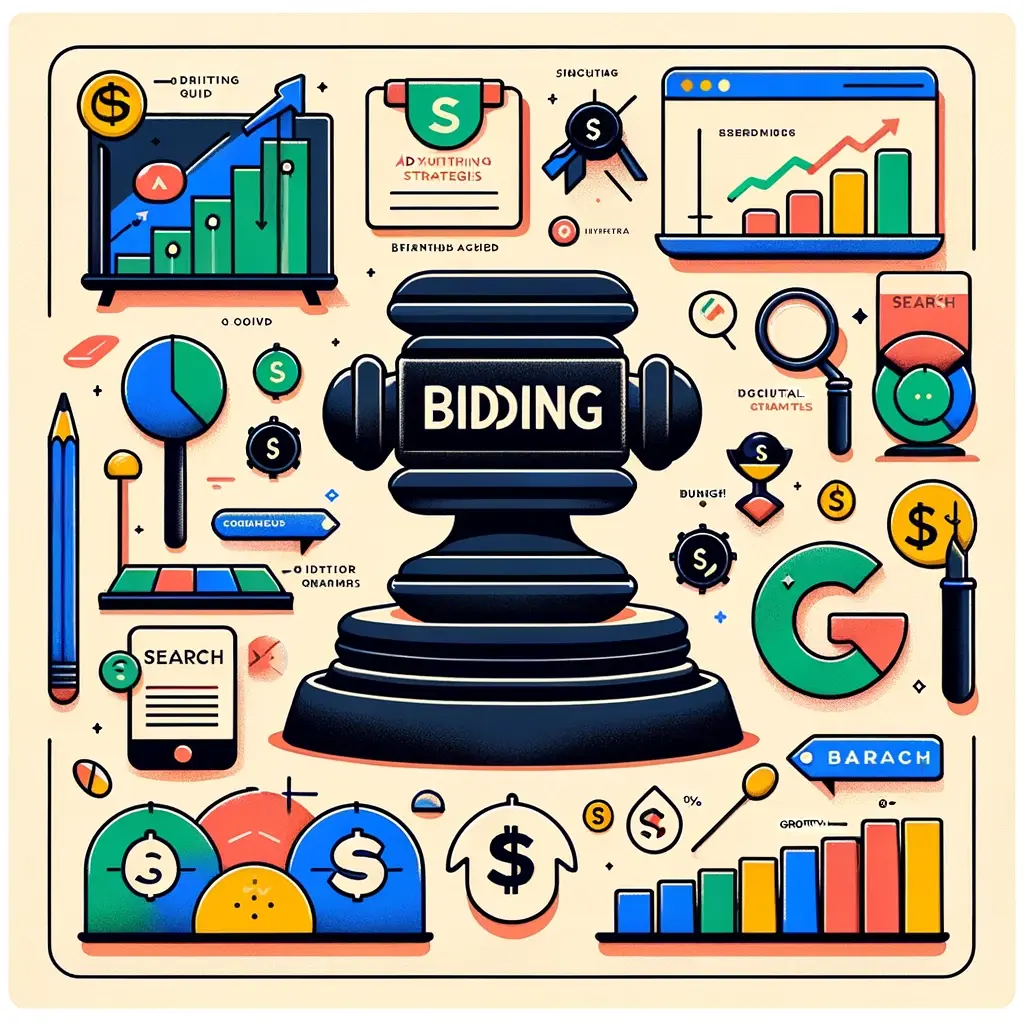There are tens of thousands of transactions happening on the Google Ads platform, but what determines when your ad is shown? One of the major factors is your bidding strategy. Outside of just the bid Google makes for your ad, they also take into account your audience’s conversion intent, your current bid adjustments, and if you are using Smart Bidding. There are a bunch of factors that bidding strategies can affect, so let’s break down each of the bidding strategies.
Let’s start with the basics, how does Google Ads bidding work? Google has a multitude of ways a user can bid on ad placements, all dependent on what your campaign conversion goal is. Most users focus on clicks, conversions, click-thru rate, cost per click, and a few other factors. So when a website has ad space available within its search network, it will run an auction for users to bid on that ad space. Your bid is your ticket into the auction and Google will take your bidding parameters to help you win that ad placement.
Here are the 12 different types of bidding strategies:
- Target CPA
- Target ROAS
- Maximize Clicks
- Maximize Conversions
- Maximize Conversion Value
- Target Impression Share
- Manual Cost Per Click
- Enhanced Cost Per Click
- Viewable CPM (cost per 1,000 impressions)
- Maximum CPM (cost per view)
- Target CPM (cost per 1,000 impressions)
- Portfolio bid strategies
When it comes to bidding best practices, you have to factor in a balance between conversions and cost per conversion (also referred to as cost per acquisition, CPA). There are scenarios where users are looking to either lower or increase their bids based on their cost per conversion metric. There are positives and negatives to each course of action, but here are some basic bidding practices to follow:
- Confirm conversion tracking is installed and working correctly
- Match your attribution model to your campaign goals
- A/B test bidding strategies
- Constant ad performance evaluations
- Utilize patience and wait to make decisions when enough data is available
- Don’t overcomplicate your account structure
When it comes to deciding what you want your ads to achieve, it is vital to set realistic goals for your campaign(s). A key tip to remember is that not all of your metrics will increase at the same time and that is okay. If you have set realistic goals to achieve, then you will start to knock out smaller goals that will gradually build up into large wins. Here are some examples of attainable goals:
- Increase conversion value by 10%
- Decrease cost per click by 30%
- Increase ROAS by 15%
While all three of these goals can be taken on at the same time, it is most effective to prioritize one of the three goals and build on that success.
The last basic element we will review is manual versus smart & automated bidding strategies. There are pros and cons to each bidding style, so knowing how each operates is vital to your campaign’s success. Manual bidding is when the user is adjusting bids manually at either the keyword or ad group level. Essentially, a user is telling Google the maximum amount they want to spend to win an ad auction. A user can use a blanket bid on the entire ad group or you can break the bidding out to individual keywords. Automated bidding utilizes machine learning to optimize your ad bidding for you based on your campaign goals. Smart bidding is a subset of automated bidding that is geared specifically towards campaigns that have conversion or conversion value strategies.
